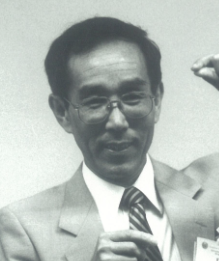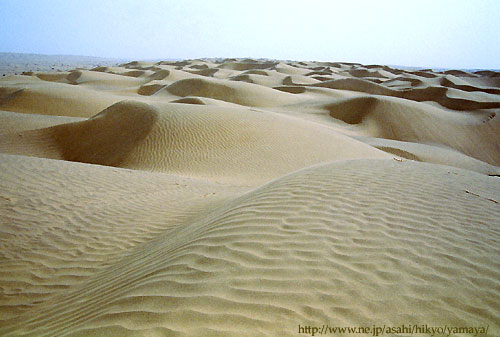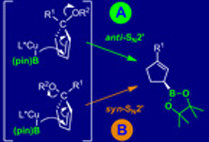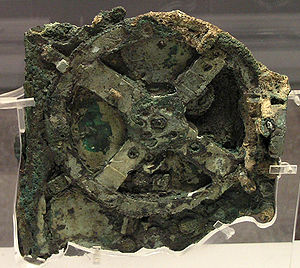For this 12th installment, we are interviewing Professor Hajime Ito from the Faculty of Engineering at Hokkaido University, who was introduced to us by Professor Jun Terao (interview #5). Professor Ito became a full professor only last year (note added for translated version: since 2010), so he is a young and promising researcher whose chemistry laboratory continues in the place of Professor Norio Miyaura (who had continued in the steps of Nobel Laureate Professor Akira Suzuki). Professor Ito is a very active researcher who studies metal complexes (catalysts), catalytic reaction development using new concepts, and in-depth characterization of specific complexes. Please read on!
[su_dropcap size=”2″]Q[/su_dropcap] What made you choose chemistry as a career?
[su_dropcap size=”2″]A[/su_dropcap]
I wanted to become a scientist ever since I was a boy. I do not really remember why I started to think like that. Up until my university entrance exams, I didn’t really think about, or I didn’t really know, what field I wanted to study. In the “Red Books” of Kyoto University (“Red Books” are entrance exam study guides for specific universities, containing questions and answers from previous years), I read that “it is best to enter this field if you want to be a pioneer in something” regarding the Department of Synthetic Chemistry in the Faculty of Engineering. I was drawn to those words and thus enrolled in that department. This department was a unique place where six distinct programs all placed a specific focus on organic chemistry while their research directions were all very different.
I entered Professor Yoshihiko Ito’s laboratory in my senior (4th) year, and at the time, the staff in that laboratory consisted of Assistant Professor Kohei Tamao, Assistant Masahiro Murakami, and Assistant Masaya Sawamura. These sharp mentors as well as ambitious senior students have taught me how to think about science. Even in our group meeting ‘journal club’ discussions, the atmosphere was like “let’s present interesting topics that other people don’t know about” and so the discussions were at a high level and were very captivating. I was able to study and learn in such a fascinating environment, forming the basis of my current research group. These are not really reasons why I became a chemist, but rather how I became a chemist. Right now, I’m on the educator side of things, but I truly wish to provide my students with the best learning environment possible.
[su_dropcap size=”2″]Q[/su_dropcap]
If you were not a chemist, what would you like to be, and why?
[su_dropcap size=”2″]A[/su_dropcap]
I would like to be a 19th century explorer. I would love to be like Ekai Kawaguchi or Sven Hedin, exploring the unknowns of central Asia. Isn’t it wonderful to walk where no one has walked before? In my college days, about 20 years ago, I once backpacked around the Xinjiang Uyghur Autonomous Region and Qinghai (both in western China). Since I cannot go on such travels anymore, I sometimes mimic this experience by expanding areas such as the Tibetan Plateau and the Taklamakan Desert on Google Earth. Why can’t we “street view” the voyage of an explorer?
[su_dropcap size=”2″]Q[/su_dropcap]
Currently, what kind of research are you conducting? Moreover, how do you foresee its future development?
[su_dropcap size=”2″]A[/su_dropcap]
My research is mainly divided into two parts. The first one involves new method development for the synthesis of organoboron and organosilicon compounds using copper catalysis. As I delved further into this research topic, I serendipitously found myself grasping the seemingly new concept of “direct enantioselective convergent synthesis” for asymmetric synthesis.
The current goal is to generalize this process. The second topic involves the study of gold complexes that change luminescence properties by applying mechanical stimuli (mechanochromic luminescence). Such complexes were also found by a graduate student’s serendipity. I’m wondering whether this finding can be expanded under the premise of “linking bulk properties to chemical reactions.” Bulk forces are based on Newtonian mechanics, and chemical reactions are governed by quantum mechanics, but is there a way to efficiently link these two together? So I’m talking about the opposite of how muscles work (muscles work by chemical reactions resulting in a bulk force). By using these gold complexes, I would like to discover new concepts.
However, in the long term, I want to do something entirely different. I think that there is a lot of untapped potential for the science of chemistry. In 100 years from now, I believe that many more research fields will have blossomed and will be supporting humanity and civilization. Serendipitous discoveries that my students and I make from time to time must surely be “clues to the future” that Nature provides us. I would like to decode these properly and pioneer new research fields in order to contribute to the future of chemistry.
[su_dropcap size=”2″]Q[/su_dropcap]
If you could have dinner with any famous person from the past, who would it be, and why?
[su_dropcap size=”2″]A[/su_dropcap]
I think it would have to be the scientists and engineers of ancient Greece and Rome. I would like to have a conversation with famous people like Archimedes and other brilliant people whose names have been lost over time. As we can see with the discovery of the Antikythera Mechanism, I think that there were more advanced technologies than we know of, even though there are no written documents to prove them. I would like to know the details of these ancient technologies, and I would like to learn about the underlying knowledge that led to such developments at a time when there were a lot of restrictions (in terms of scientific knowledge and infrastructure). Lastly, since I am a Hokkaido citizen (although I am originally from Osaka), I would like to meet William S. Clark (who established the Sapporo Agricultural College) and Masataka Taketsuru (who founded the Nikka Whisky Distilling Co.) and eat Jingisukan together (Jingisukan is a Japanese mutton dish).
[su_dropcap size=”2″]Q[/su_dropcap]
When was the last time you performed an experiment in the laboratory, and what was it about?
[su_dropcap size=”2″]A[/su_dropcap]
The last time I performed a synthesis experiment was Mar 25, 2009. I had verified the reproducibility of a reaction before submitting a manuscript. In terms of synthesis experiments, there are many skilled students in my lab and so I don’t have much to contribute. As for fluorescence microscopy, SEM, AFM and X-ray crystal structure analysis, we are still learning together as a group and therefore I work on one of these practically every day.
[su_dropcap size=”2″]Q[/su_dropcap]
If you were stranded on a desert island, which book or song/piece of music would you like to have with you? Please single out your favorite example.
[su_dropcap size=”2″]A[/su_dropcap]
As for books, I would bring a star map for daytime ‘reading’; at night, I would just gaze at the stars. Honestly, I don’t listen to much music on a daily basis, but if I were to, I would bring soundtracks of Ridley Scott’s blockbuster “Gladiator” or the TV drama “Battlestar Galactica” (the newer version). I would want to create a “survivor’s feeling” to the desert island.
[amazonjs asin=”B00AEFY5B6″ locale=”US” title=”Gladiator”]
[amazonjs asin=”B0036EH3U2″ locale=”US” title=”Battlestar Galactica: The Complete Series Blu-ray”]
[su_dropcap size=”2″]Q[/su_dropcap] Do you have any suggestions as to whom we should interview next?
[su_dropcap size=”2″]A[/su_dropcap]
Starting from the professor who introduced me to this interview—Professor Terao at Kyoto University—I have been fortunate to have met so many bright and admirable research scientists. I have also learned from many of these professors through collaborations. I would love to introduce all these people to you, but (fortunately!) there are too many, so for now, I will only introduce you to two people: Professor Shu Seki at Osaka University and Professor Shiki Yagai at Chiba University. I was first acquainted with them through the Japan Science and Technology Agency’s PRESTO “Sakigake—Matter and Light” program, and I have been fortunate to interact with them through research and other activities. Both professors conduct beautiful research that bodes well for the future of chemistry.
[su_box title=”Biographical sketch of Hajime Ito:”] After obtaining his B.Sc. in 1991 from the Department of Synthetic Chemistry in the School of Engineering at Kyoto University, Professor Hajime Ito obtained his Ph.D. from the same department in 1996 (mentored by Professor Yoshihiko Ito). Thereafter, he became an Assistant in the Department of Chemistry at the University of Tsukuba, then an Assistant in the Molecular Science Group at the Okazaki National Research Institutes, then a visiting scientist at The Scripps Research Institute in the USA (mentored by Professor Kim D. Janda). In 2002, he became an Assistant Professor in the Division of Chemistry in the Graduate School of Science at Hokkaido University (mentored by Professor Masaya Sawamura). Since 2010, he is a Professor in the Division of Chemical Process in the Faculty of Engineering at Hokkaido University.
[/su_box]
Japanese version written here on Feb 17, 2011 ; English translation written on July 10, 2014.






